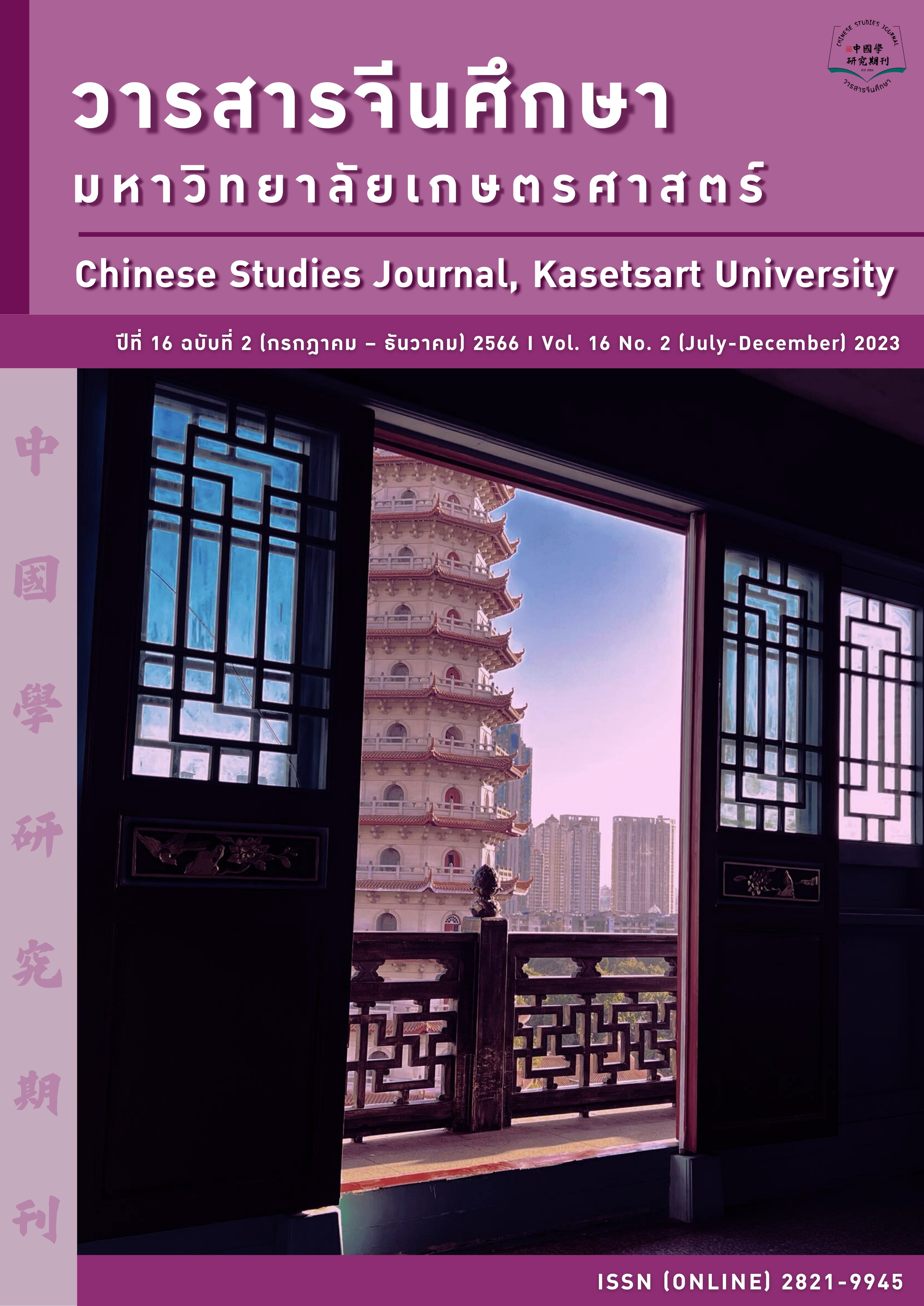Column Couplets in Thai - Chinese Temple A Case Study of Tsi Shan Temple in the HatYai District Songkhla Province กลอนคู่รูปแบบอิ๋งเหลียนในวัดคณะสงฆ์จีนนิกาย กรณีศึกษาวัดฉื่อฉาง อำเภอหาดใหญ่ จังหวัดสงขลา
Main Article Content
Abstract
Column couplets are couplets written in Chinese and carved on the column. Column couplets are special type of Chinese verse. The skill of writing Chinese couplets is keeping symmetry, two sentences of couplets must have the same number of characters, and the first sentence is on the right side, the second sentence is on the left side. Column couplets can be found in most of the Thai - Chinese temples in Thailand. This study had investigated Tsi Shan Temple and collected all the column couplets of the temple. Author had translated couplets from Chinese to Thai, studied the structure and assessed the historical value of column couplets, the result shows that Tsi Shan Temple has a long history but the history about the temple abbot who is also the column couplets writer may not have been recorded in the history of the temple. And as the reason of the decline of the author's Chinese proficiency, column couplets of the temple have changed in meaning, structure and historical value with times changing. And with the theory of cross-cultural communication and the theory of Herbert Marshall McLuhan, the medium is the message. Culture always must adapt itself to the development of society. There for, couplets in Tsi Shan temple made a change from the cool medium to the hot medium.
Article Details

This work is licensed under a Creative Commons Attribution-NonCommercial-NoDerivatives 4.0 International License.
ผลงานทางวิชาการที่ลงตีพิมพ์ในวารสารจีนศึกษา มหาวิทยาลัยเกษตรศาสตร์ เป็นลิขสิทธิ์ของผู้เขียนหรือผู้แปลผลงานนั้น หากนำลงในวารสารจีนศึกษาเป็นครั้งแรก เจ้าของผลงานสามารถนำไปตีพิมพ์ซ้ำในวารสารหรือหนังสืออื่นได้โดยมิต้องแจ้งให้ทราบล่วงหน้า แต่หากผลงานที่ได้รับพิจารณานำลงในวารสารจีนศึกษา เป็นผลงานที่เคยตีพิมพ์ที่อื่นมาก่อนเจ้าของผลงานต้องจัดการเรื่องปัญหาลิขสิทธิ์กับแหล่งพิมพ์แรกเอง หากเกิดปัญหาทางกฎหมาย ถือว่าไม่อยู่ในความรับผิดชอบของวารสารจีนศึกษา มหาวิทยาลัยเกษตรศาสตร์ ทั้งนี้ ความคิดเห็นต่างๆ ในบทความเป็นความคิดเห็นส่วนตัวของผู้เขียน ไม่เกี่ยวกับกองบรรณาธิการวารสารจีนศึกษา มหาวิทยาลัยเกษตรศาสตร์
References
กัลยาณี กฤตโตปการกิต. (2019). กลวิธีทางวาทศาสตร์ในคำขวัญสิ่งแวดล้อมภาษาจีน. มหาวิทยาลัย ขอนแก่น.
ถาวร สิกขโกศล. (2009). เผียนเหวิน: คำประพันธ์พิเศษของจีน. วารสารจีนศึกษา, 2009(2), 134-140.
ภากร ฉัตรเจริญสุข. (2015). คุณค่าและการเปลี่ยนแปลงของวัดจีน ในสังกัดคณะสงฆ์จีนนิกายแห่งประเทศไทย กรณีศึกษา:
วัดจีนในกรุงเทพฯ. จุฬาลงกรณ์มหาวิทยาลัย.
พิชณี สวัสดิ์ตยวงศ์. (2004). ป้ายมงคลจีน เถียวฟู่ และตุ้ยเหลียน. วารสารภาษาและวัฒนธรรม, 23(2), 46-59.
พระภาณุวัฒน์ เลิศประเสริฐพันธ์. (2018). การบริหารจัดการศึกษาของคณะสงฆ์จีนนิกาย. บัณฑิตวิทยาลัย มหาวิทยาลัยศิลปากร.
สุพจน์ อภิญญานนท์. (2000). แนวความคิดในการออกแบบวัดจีนในประเทศไทย. บัณฑิตวิทยาลัย สถาบันเทคโนโลยี
พระจอมเกล้าเจ้าคุณทหารลาดกระบัง
郭憲铃. (2022). 又是一個不得不的選擇. 大成报郭憲铃專欄1.2.2022.
柳紅玲. (2011). 論楹聯与我國傳統文化的繼承發展. Journal of Shandong Youth University of Political
Science issue, 149, 158-160.
王永寬. (2011). 桃符演变为春联的文化探讨. 河南教育學院學報 (哲學社會科學版), 2011(2), 8-12.
周敏. (2011). 周阿姨的故事. 商周出版.
Larry A Samovar, Richard E Porter. (2010). 跨文化傳播:第四版. 中國人民大學出版社.
Herbert Marshall Mcluhan. (2000). 理解媒介. 商務印書館.


